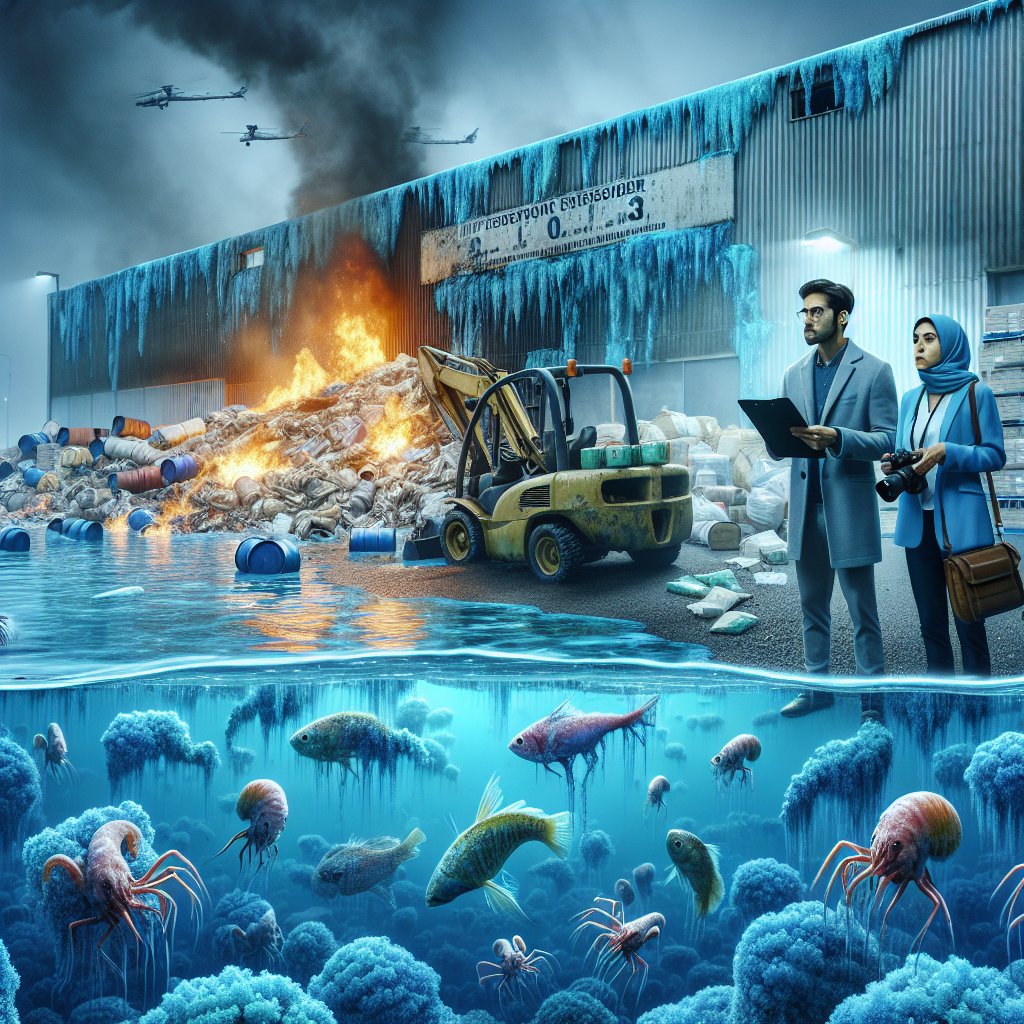Content created by AI
Unearthing the Toxic Secrets: The Aftermath of Durban's UPL Warehouse Fire
July 2021 will long be remembered for the wave of unrest that struck South Africa, but in Durban, the repercussions of those turbulent days have taken a particularly toxic form. The fire that engulfed a warehouse in Cornubia, Durban has left an indelible mark on the environment and possibly the health of nearby communities.
The warehouse, leased by the international agrochemical company UPL, contained a vast array of pesticides. When the contents of the warehouse caught fire, the chemicals were released into the environment in an uncontrollable inferno. This led to a surreal and devastating sight: rivers in the vicinity turned a bizarre luminous blue, and a grim toll was extracted on the local wildlife, with thousands of fish and crustaceans perishing.
The human impact of the disaster has been no less disquieting, as residents living in the surrounding area began to experience health concerns after inhaling the pervasive toxic fumes. Many have voiced anxieties about the possibility of long-term health effects, yet, despite this, they have been left in limbo by UPL's refusal to disclose what chemicals were contained in their warehouse.
Determined to uncover the truth, investigative journalists, Susan Comrie and Dewald van Rensburg from the amaBhungane Centre for Investigative Journalism, embarked on a mission to expose the extent of the chemical calamity. Their investigative work revealed a terrifying array of toxic substances, laying bare the significant ecological and health implications for the region.
The fallout from the disaster has raised numerous questions about the legal frameworks governing chemical storage and disaster management in South Africa. Was the catastrophe a result of a simple oversight, a legal loophole cleverly exploited, or outright negligence on the part of UPL? Initial tests in the aftermath have revealed disturbing levels of arsenic, a highly poisonous element, in the surroundings of the torched warehouse.
Residents, meanwhile, have been kept in the dark, with little to no information regarding the danger that has been lurking on their doorsteps. This lack of transparency has further exacerbated the fear and uncertainty of the community.
The UPL chemical disaster therefore not only represents an ecological tragedy but also serves as a wake-up call about the inherent vulnerabilities in the oversight of hazardous materials. The need for stringent safety measures and clear communication in the event of such disasters is unquestionably imperative.
The findings of the amaBhungane journalists have been crucial in bringing to light the severity of the situation. Their investigation serves as a sober reminder of the continual need for due diligence and accountability from both corporations and regulatory bodies when it comes to the protection of the environment and public health.
In this detailed analysis, we explore the hazardous legacy of the UPL warehouse fire in Durban and the ensuing battle for transparency and justice for those affected. The story raises questions about corporate responsibility, environmental stewardship, and the rights of citizens to live in a safe and informed community.

